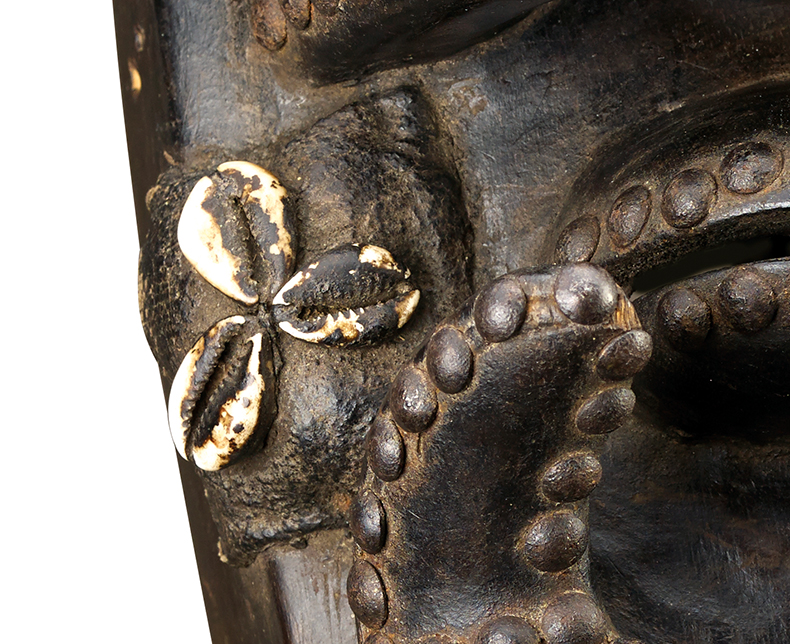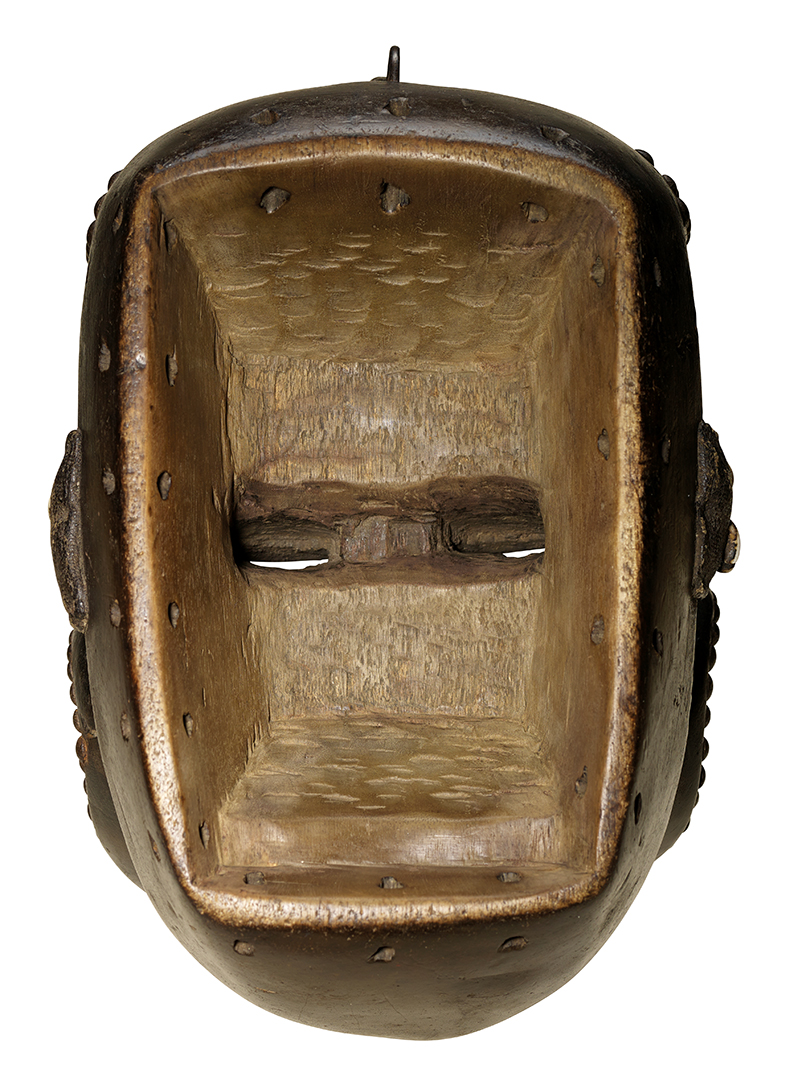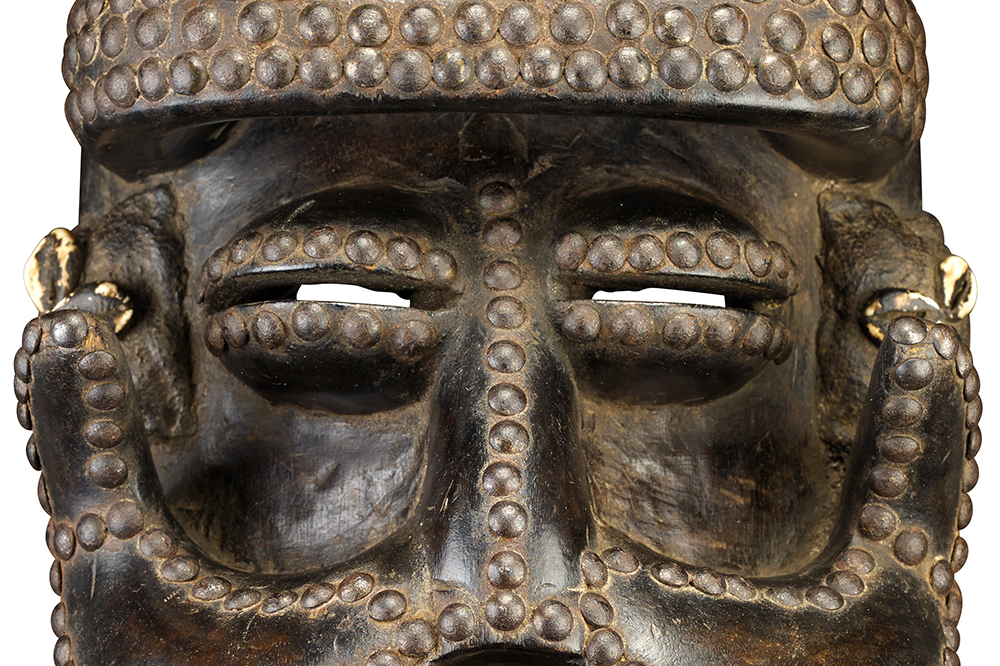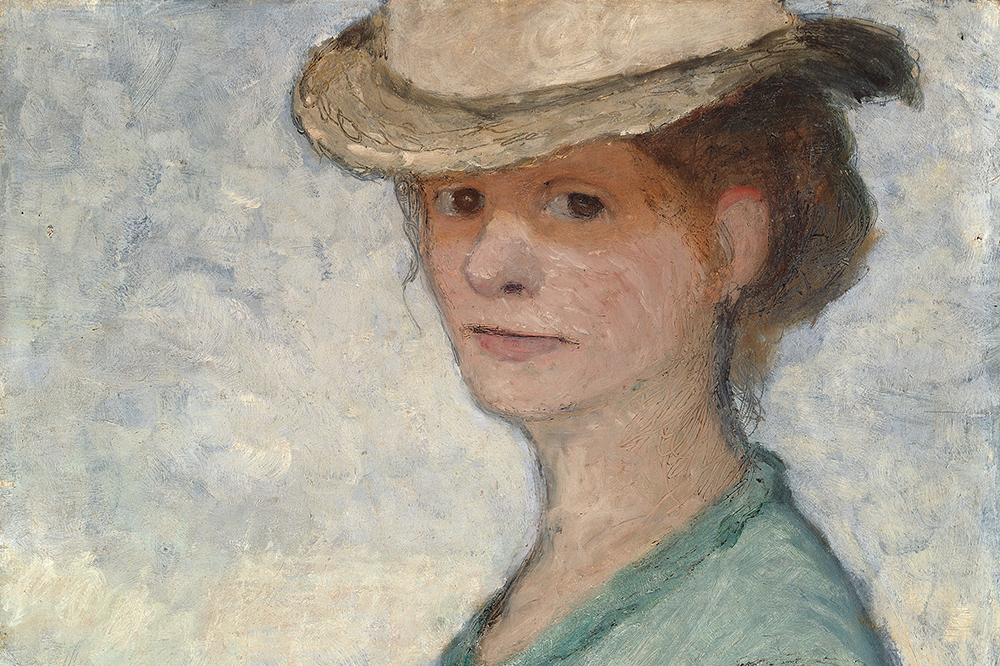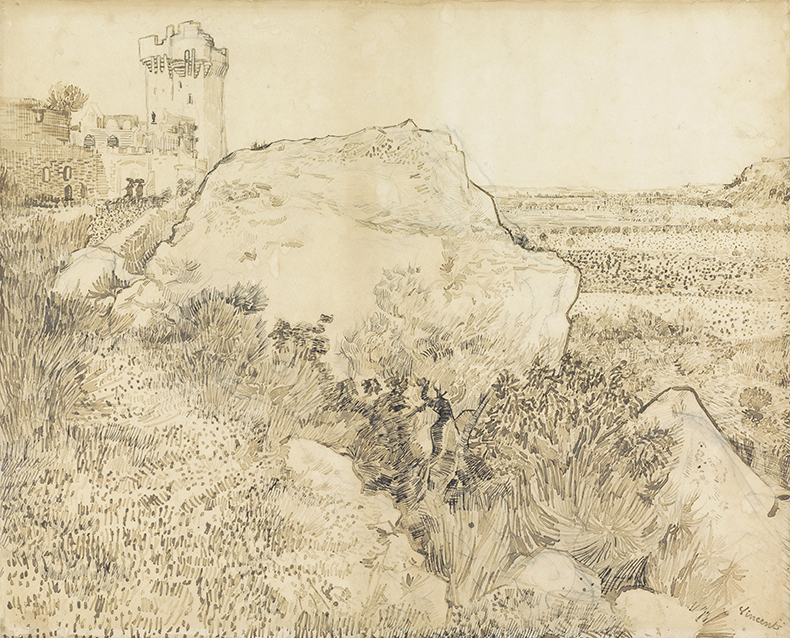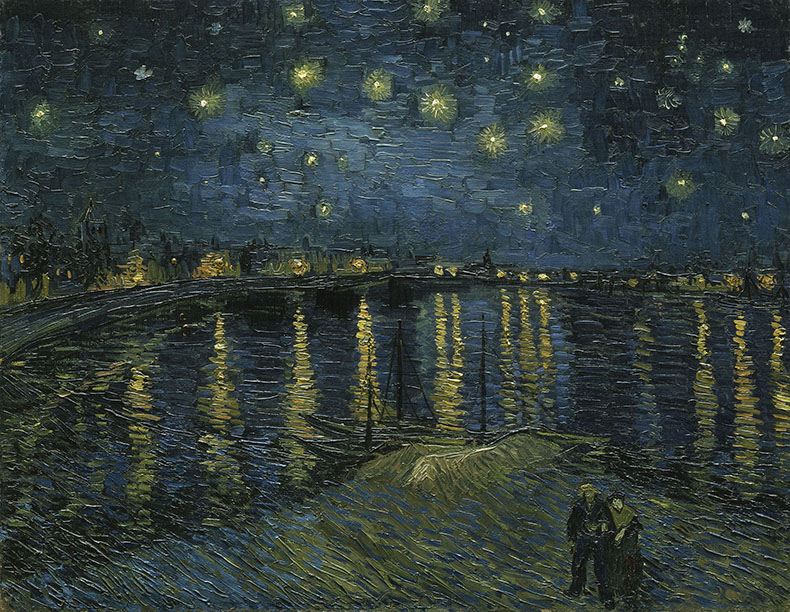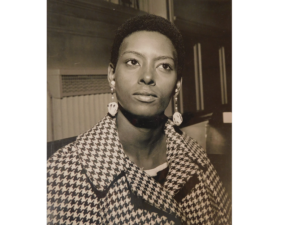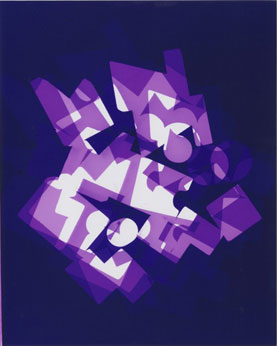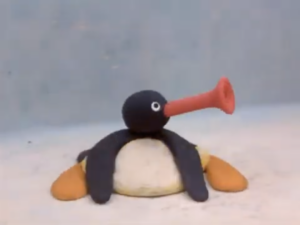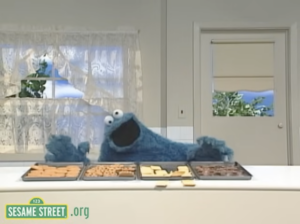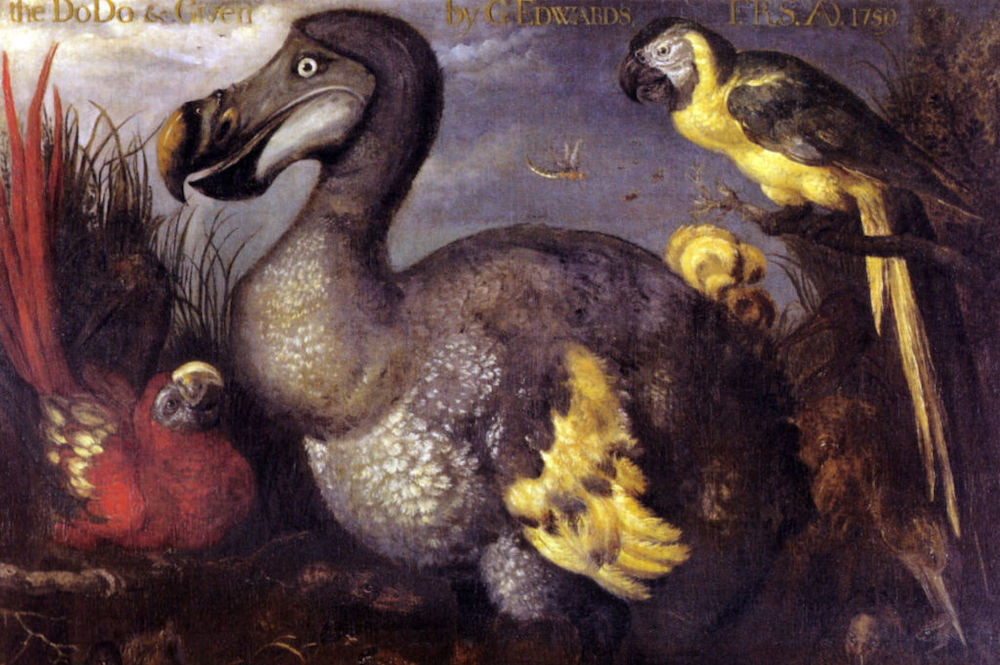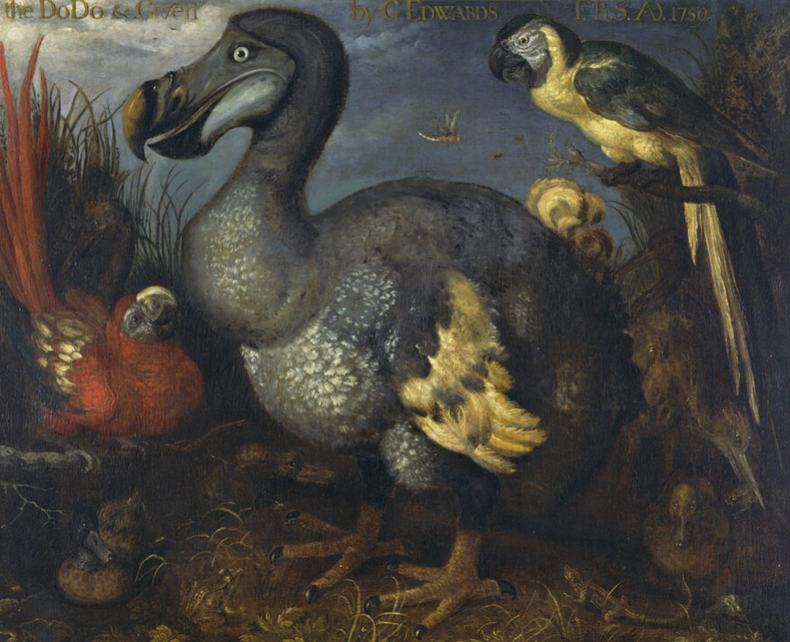From a lecture given to students at Duke University on January 21, 2021.
In the early years of the fifth century, a famous philosopher visited Athens. You could say that this philosopher, Parmenides, was the inventor of ontology, and thus, in a way, the first real philosopher. Athens was a small town, and everybody knew who he was. Being a celebrity, he met a lot of people, one of whom was the young Socrates, who might have been a teenager. They had a long conversation. That would have been around 450 B.C.E., and if you believe the reports of this, perhaps you could date the beginning of Athenian philosophy from that encounter. Socrates will then meet the young Plato in 407 B.C.E. Plato abandons playwriting and becomes part of Socrates’s circle, and after Socrates’s execution for blasphemy in 399, he starts to write the dialogues, a lot of which are fictional, perhaps including this meeting with Parmenides, which becomes one of Plato’s most complicated works. Did this actually happen? Who knows? In any case, Plato will turn his circle into a kind of school, the Academy. In about 367 B.C.E., a young man from the North—who is not an Athenian and therefore never really enters Plato’s intimate circle—will come to this school to join his group. This man, Aristotle, is from the general area of the Macedonian coast, and in 343 he is summoned by the king of Macedonia to tutor his son, who becomes the king when Philip II is assassinated, the figure whom we know as Alexander the Great. Aristotle then returns to Athens and founds his own school, the Lyceum, which practices a certain critique of Platonism. The Lyceum is founded in 335 B.C.E.
After that, there emerge two major streams of philosophy that shape medieval philosophy, and then Western philosophy in general. These two major branches of philosophy are, of course, Neo-Platonism and Aristotelianism, and we can abandon those to their own stories. But, if you follow these dates, if you really want to start this period in 450 B.C.E. and end it with the foundation of the Lyceum, you have about a century of interactions and of intellectual stimulus. Lots of other things are going on, of course. There are two world wars. The Persian War has just ended at the beginning of this period, and the great civil war of the Greek city-states, the Peloponnesian War, is just beginning. It is a hot war between Sparta and Athens, essentially, and it will end with the defeat of the Athenians. So there is an initial moment in which the Athenians defeat the Persians and start a civil war with Sparta, ending with the defeat of Athens. Almost immediately, there follows the world conquest of Alexander the Great and the beginning of a still Greek but principally Hellenistic period, which is, let’s say, a bilingual world of Greek and Persian, in which the intellectual center of the world will gradually shift from Athens to Alexandria. Anyway, this period seems to have a certain coherence, and it makes sense to think of it as a period in its own right.
Now, if you skip to another philosophical period, eighteenth-century Germany, you find not a period of city-states but of principalities. There is no real German capital. Berlin is to be sure the Prussian capital, but merely a larger city than some of the others. Suddenly, in 1781, from one of the outlying parts of the German-speaking world, which is later called East Prussia but has now completely disappeared, out of a city which was called Königsberg, comes the publication of The Critique of Pure Reason, which suddenly inaugurates a whole new philosophical school. Everything comes out of that. I won’t go into a lot of detail, but we note that the publication comes immediately after the American Revolution and before the French Revolution, so this is a period of tremendous historical convulsions.
So we could date this period of German philosophy from 1781 to the death of Hegel in 1831. Hegel, Schelling, and Hölderlin are roommates in Tübingen. Fichte moves back and forth through these areas; produces an enormously influential rewriting of Kant and then the first great defense of German nationalism during the Napoleonic invasion. The group called the Romantics are all living in Jena at the time, and Hegel, an unemployed graduate student, somewhat older, comes to Jena later. Weimar being quite close to Jena, it is Goethe who refounds the University of Jena, where Hegel finishes the Phenomenology just as Napoleon is winning the Battle of Jena. It is said that Hegel could hear the guns in the distance as he was writing the last pages of his book on absolute spirit, and even that he saw Napoleon himself, whom he pleasantly called “the world-spirit on horseback.” At any rate, this is a comparable period in which you have an even tighter relationship between these various players and a monumental external world history.
What is that relationship? The history of philosophy is not a history of ideas: it is a history of problems. The Critique of Pure Reason is a critique, and it is a critique of types of knowledge. It raises all kinds of problems, and suddenly all those problems lead to an efflorescence of philosophical thought. After Kant come the Hegelian schools, to one of which Marx belongs, and by the time you get to 1850, suddenly all of Hegelianism is eclipsed by a very old book, written at practically the same time as Hegel’s early works, which is by Schopenhauer. Schopenhauer’s work, along with Lange’s history of materialism, suddenly eclipse all that came before them and lead us into a new period of German thought dominated by Nietzsche.
All that is to tell you that I think there is such a thing as the periodization of philosophical problematics. Problématique is the word that Althusser uses for this, for a complex of problems that are intertwined and that touch on certain limits, because there comes a moment when you see that these kinds of thinking can’t go beyond a certain point, where the problem itself becomes a kind of straitjacket, where the creative force of philosophical inquiry is lost and you get a period the Germans call Epigonentum. You know what epigones are: people who are born a little too late to participate in the great era. The younger French writers—Musset is the most famous—who came to their maturity after Napoleon had a nostalgia for this moment under Napoleon when you could become a general at twenty-five. That comes to an end, and the next generation considers itself, rightly or wrongly, epigones of this great period.
I gave you to read Alain Badiou’s book called The Adventure of French Philosophy, which tries to theorize the notion of modern French philosophy as a period. It’s a rather scattered collection of his own stuff, but the preface tries to theorize this notion of the adventure of French philosophy, and I think it is very suggestive. It’s not exactly what I would have done, but it is a starting point. The other text I put on reserve, by the way, for your amusement, is an interview with Jane Gallop, who was a student in Paris in the sixties, and which gives you an idea of this period from her perspective. She was studying with Derrida at the time French feminism was just evolving, closely related to Derrida, and the interview gives you an idea of the excitement of that moment that we’re going to look at in French philosophy. So that is less immediately relevant for us here, but her testimony is interesting. Badiou writes that
within philosophy there exist powerful cultural and national particularities. There are what we might call moments of philosophy, in space and time. Philosophy is thus both a universal aim of reason and, simultaneously, one that manifests itself in completely specific moments. Let us take the example of two especially intense and well-known philosophical instances.
And then you have what I’ve just been describing. “First, that of classical Greek”—I would rather say Athenian—“philosophy between Parmenides and Aristotle, from the fifth to the third centuries BC: a highly inventive foundational moment, ultimately quite short-lived”—although this is a little longer than the other ones were talking about.
Second, that of German idealism between Kant and Hegel, via Fichte and Schelling: another exceptional philosophical moment, from the late eighteenth to the early nineteenth centuries, intensely creative and condensed within an even shorter time span. I propose to defend a further national and historical thesis: there was—or there is, depending where I put myself [because Badiou is still alive, of course, and still writing and philosophizing]—a French philosophical moment of the second half of the twentieth century which, toute proportion gardée, bears comparison to the examples of classical Greece and enlightenment Germany.
I think that’s so. I think this is a very remarkable period, and I propose this as the subject of our seminar this semester.
How long does this period last? I think everyone agrees—and, of course, this is also Badiou’s opinion—that it starts all of a sudden, in 1943, with Sartre’s Being and Nothingness. This is a kind of a meteorite that falls in the middle of an era which is, in France at least, a strange pause in history: the German occupation of Paris. The occupation will end the following year, in August of 1944, with the liberation of Paris, and, of course, World War II ends after that, in 1945. Sartre calls this period of the occupation of Paris the “republic of silence,” and I’ll read you the first lines of his account of this period. This is from a collection of essays with the title We Have Only This Life to Live, which is the best English collection of Sartre’s collected essays from 1939 to 1975, which are otherwise scattered in different publications. So this is where Sartre starts:
Never were we freer than under the German occupation. We had lost all our rights, beginning with the right to speak. We were insulted to our faces every day and had to remain silent. We were deported en masse, as workers, Jews, or political prisoners. Everywhere—on the walls, on the movie screens, in the newspapers—we came up against the vile, insipid picture of ourselves our oppressors wanted to present to us. Because of all this, we were free. Because the Nazi venom seeped into our very thoughts, every accurate thought was a triumph. Because an all-powerful police force tried to gag us, every word became precious as a declaration of principle. Because we were wanted men and women, every one of our acts was a solemn commitment.
And the word commitment, of course, is the famous Sartrean word engagement. Anyway, that is the way that Sartre and his friends thought of this strange period. Sartre’s first play, The Flies, was allowed to be produced. The Germans were very anxious—or at least at that point the cultural attaché of the Nazi occupying regime was anxious—that Paris be seen as a very lively cultural place under German protection, so they encouraged all kinds of publications which were not explicitly anti-German, anti-Nazi, including Sartre’s first play. Before that, Sartre had written Nausea, which is one of the most important novels of the twentieth century. It isn’t on our list, but someday you must all, if you have any interest in philosophy, read that. In a sense, it’s the only successful philosophical novel. But to develop that would be a longer matter. Anyway, we begin with Being and Nothingness because it does set all this off. So my title, “postwar,” is just slightly imprecise.
In his essay, Badiou goes on to talk about four different operations in this period. Four procedures, which exemplify the way of doing philosophy specific to this moment: the first one is a German one, or a French move upon German philosophers; the second one concerns science, the French philosophers who sought to wrest science from the exclusive domain of the philosophy of knowledge; the third operation is a political one undertaken by those thinkers of the period who sought an in-depth engagement of philosophy with the question of politics; the fourth operation has to do with the modernization of philosophy, in a sense quite distinct from the cant of political and social journalism. Here, we find a desire for the transformation not only of philosophical thought but of philosophical language as such. And I think one can say that, in a sense, France is one of the last Western European countries to modernize, really in this now American sense, because a lot of them called all this américanisation. That begins in France with de Gaulle, the second de Gaulle regime, after he returns to power in 1958. So the Paris of this earlier period, allowing for the destruction of the war, is not terribly different from Balzac’s Paris. What happens to Paris after that, in the following decades, will move it much closer to a conventional world city.
At any rate, I mention that, just as I mentioned these political events in ancient Greece and in the period of Kant and Hegel, to explain why we’re also going to have to outline, however imperfectly, a kind of history of contemporary France. We’re going to need to see what kind of effect this extremely mobile period in French history has on philosophy, or rather the other way around: how the philosophers tried to react to these historical events. The France that came into being after the war was still a colonial power. It had its colonial war, which it passed on, as you well know, to us, after having been defeated. The French then faced something even more cataclysmic, which ended with the return of General de Gaulle to power, the beginning of the Fifth Republic, and the independence of Algeria. After that, what can one say? One can say that the opposition was reabsorbed into a kind of institutionalized space, and that France begins to be a part of something that emerges as the European Union, losing something of its national identity. And so the France of today is not at all the France of Gaullism and the autonomous France of that period, which has its effect on the philosophers themselves, because, after all—and I am not at all talking as a nationalist—the national fact, the framework of a nation that you’re in, is a collective part of your individual personality. Certainly, the primacy of Athens is all part of ancient Greek philosophy. Plato’s utopias, for example, are absolutely a response to this permanent crisis, which is the Athenian state and its imperialism. In Germany the tendency is, first of all, the assumption of a German nationality with Fichte and then the attempt, as in Italy, at a unification of these provinces, which will only happen with the Franco-Prussian war of 1870. It will be hard to talk about these individual philosophers in much detail, but that is a general story I’m going to tell you about the whole movement of this period, a story which runs from the question of individual action, the kind that we just heard Sartre expressing in terms of the German occupation, to the effort to deal with larger institutional and even transnational structures, under which your own political positions, your own words, are acts that have a meaning inside of a very constrained situation.
Now I’m passing to the four divisions of our readings in terms of which I want to tell this story of modern French philosophy, or, if you would like, modern French theory. First is this immediate period of the postwar, beginning in the occupation and running up to the beginning of the Korean War and of the Cold War, I would say. I characterize that as the period of the Liberation; libération is the crucial French word for this historical period. It is a period of the possibility of individual action and individual identity, and it is shot through with the fundamental political movement of anticolonialism, which will come to an end in the Algerian War, since Algeria is then officially not a colony but a province of the French state. And, therefore, this is not only a war of national liberation, as they would call it in that period; this is also a civil war, and it is the most deeply festering wound of colonialism in France. As you know, the fifties are a great period of decolonization all over the world. Britain’s colonies become independent. But it doesn’t mean that colonialism is over. The word we use now is neo-imperialism. France still has what are effectively colonies. There is something called Françafrique, which is France’s unwritten partnership with all its former French speaking colonies. You will have seen in the newspapers that whenever some group of Islamic terrorists kidnap somebody in French Africa, French parachutists arrive the next day and track them down. So, economically, militarily, there is still some kind of French power in its former colonies.
The other thing that then begins, besides anticolonialism, which I think is the fundamental impulse of this period, is the Cold War. It’s very important that you understand how the Western Europeans see themselves, even in England, but in France and Italy above all, because Spain is still Francoist. They feel themselves caught between the two superpowers. It’s the Korean War that suddenly proves this. The official Cold War, so to speak, begins in France in the late forties. The first Gaullist government is a government of national union which includes the Communist Party for the first time in modern French history. When the communists leave the government in May 1947, that is the beginning of the Cold War in France.
Caught as they were between the two great powers, France and Italy, with very strong leftist parties, entertain the possibility that each country needs to affirm a national identity, which is distinct, either from Soviet Communism or from Americanization and the Marshall Plan. The Marshall Plan includes all kinds of economic conditions. You may think that the Marshall Plan is a wonderful, gratuitous, generous act with respect to the Europeans—and, in a sense, it was—but it also very much included, for example, conditions about the import of American films. French national governments in the film area like to include foreign films in quotas so that their own national film industries are not destroyed, as in other countries, by this overwhelming export of Hollywood. The Marshall Plan included clauses which restricted the national possibility of excluding those Hollywood products. So the Marshall Plan, in that sense, can be seen as a project to wipe out national film industries. It was overall quite successful, but, in France, much less, because of both the New Wave and the resistance of Gaullism to this kind of American imperialism.
At any rate, France is caught between these two super states. Its intellectuals have to ask themselves what side they’re on. And you will see that one of the reasons why Americans don’t like Sartre—and to a certain degree, Beauvoir—has to do with their positions here. In Beauvoir’s novel The Mandarins, which people don’t read so much anymore but which is a wonderful evocation of this immediate postwar period, the intellectuals are constantly asking themselves: “If it’s a choice between the Americans and the Soviets, what do we do?” “Well, the Soviets of course,” they say. “Socialism.” They know about the gulags, but nonetheless they don’t want Americanization. So this is not exactly “fellow-traveling.” This is an attempt to affirm an autonomy of French culture, if you want that kind of word, in the face of the gradual absorption of the European countries. You see this with Brexit. Some of the European states still feel the oppressiveness of the European Union, as opposed to that of the superstates, though you could say that the European Union is already an attempt to create a European superstate in between these two things, even though, of course, the Soviet Union is now gone.
Anyway, that is a first period, which is dominated by Sartre, Sartrean existentialism, and phenomenology. Suddenly, in the late fifties, we’ll say, something else begins to happen, a turn toward communication and language that is called structuralism. I think that is the easiest way of conveying all this. Suddenly there’s a new philosophical current, not from a philosopher but from an anthropologist, Lévi-Strauss, a turn to structural linguistics and a meditation on language, on narrative analysis. All these things begin to colonize the various disciplines. So I would say structural linguistics has a profound effect on the disciplines not only in France but in other countries. So you get this structuralist period, which is dominated by a whole notion of language that we will look at. And, from the point of view of anthropology, suddenly you get a very interesting phenomenon, which is that of tribal utopias, of the attempt to analyze societies without power. Lévi-Strauss’s work is a fundamental contribution to that movement.
And then, in a dialectical fashion, the meditation on societies without power brings about a meditation on power. I would say that is the moment when French philosophy moves away from the emphasis on individual consciousness that you found in the first period toward a period dominated by the notion of transindividual forces. I would say it’s a little bit like pre-Socratic philosophy in that sense, or the Tao; it doesn’t want to focus anymore on individual consciousness, which would be called “the subject.” Focusing on the subject in this period means being confined, as Sartre was, to individual consciousness or the Cartesian subject. This older focus will then be called, with a certain contempt, la philosophie du sujet. The new period wants to get out of the individual subject and into great, supraindividual forces, even in psychoanalysis, the drives (pulsions). So, in my opinion, this period will be dominated by the two great figures of this period: Deleuze, with his notion of the philosophy of the concept, and Foucault, with his idea of power. With Derrida, it’s a little bit different. We would say that Derrida is committed to undermining both the philosophy of the subject and the linguistics of structuralism. Can we say that Derrida has any positive positions with respect to these forces? I think not, but, nonetheless, his is a related project. And this is not to say that these people all worked together. Foucault and Derrida hated each other. They had a great fight. Deleuze is a little bit distant from all these folks, although he had a friendship with Foucault.
We’ll see that this third period is characterized by greater forces under the impact of what I call the experience of defeat, because, indeed, I have omitted a crucial moment in contemporary French history, fundamental in any consideration of France even today: May ’68, the great uprising against … everything, really. Everybody used to joke that even people who were self-employed went on strike. Against whom? Against themselves. Everyone was out in the street; there was an immense fraternization. You can see this, if you like, as the culmination of the utopian strain that I mentioned. This was the great moment of utopia, and it failed. It did not lead to revolution. The Communists are blamed for that. Instead, it led to Gaullist oppression, although General de Gaulle left the government at that point, and finally it led to the corporatization of France. I see this emphasis on supraindividual forces as a reflection of that corporatization, that eventual coming into being of the great transnational monopolies. And the same is true here. That is to say, when the Vietnam War was over, Nixon had prolonged it to the point that the revolutionary power of the antiwar movement was lost. What appeared when the dust settled, when the fog of war cleared away, was not a transformed world, not even the world of decolonization, of independent nations, but the world of transnational corporations, nascent globalization, and the end of a period of this or that individualism, this or that revolt. So here we have, as it were, two overlapping periods: that of structuralism, the linguistic turn, and that of revolt, the Algerian War, May ’68, and so-called poststructuralism.
Then a fourth period could be this period of the epigones, if you like, but I don’t like to put it that way. We will look at some of the writers from this period. It is certainly a period of globalization. It is a period of a return to the disciplines in the sense that French philosophy had broken free of the disciplines in a way that I will describe in a moment. So it is a return to institutionalization and, of course, of postmodernism, because that is really the first global American cultural movement. You can still count, for example, Foucault’s aesthetics among the aesthetics of modernism. Deleuze is always a little more difficult to pin down on these things, but, in a sense, the conclusion of Deleuze’s film book is not a postmodernist conclusion but a modernist one. In this period, however, little by little, the modernist aesthetic falls away and you get the beginnings of something else. The beginnings of what? I also call this the end of theory.
Now let’s look at this from a different point of view. We have said that each of these philosophical periods—Greece, the Germans, and now the French—are characterized by a problematic, but a changing problematic, a production of new problems. This is, in effect, Deleuze’s whole philosophy, the production of problems. But, if you put it that way, if you say philosophy’s task is the production of problems, what problems could there be if philosophy has come to an end? These problematics always end up producing a certain limit beyond which they are no longer productive.
What I want to say is not that these people all knew each other, not that they exactly derive problems from each other the way Schelling, Hegel, and Fichte will derive their problems directly from The Critique of Pure Reason, but in a different way which turns on the matter of what is called influence. People think influence is the reproduction of something. When people say, for example, that Simone de Beauvoir, Frantz Fanon, Merleau-Ponty—even, to a certain degree, Camus—were influenced by Sartre, that is not the right way to put it, I think. I once interviewed an East German novelist who was quite interesting at the time, and we asked him the then-obvious question: “How much of an influence did Faulkner have on you?” As you know, after the war, all over the world, it is the example of Faulkner that sets everything going, from the Latin American boom to the newer Chinese novel. Faulkner is a seminal world influence at a certain moment. But what does that mean, “Faulkner’s influence”? So he said, “No, I never learned anything from Faulkner—except that you could write page after page of your novel in italics.”
What does that mean? It means that to be influenced by somebody is not to write like him or her; rather, someone’s work suddenly opens up new possibilities that you never thought of before. It never occurred to you that you could put page on page in italics. Suddenly, you’re free. You’re opened up to something new, which may go in a completely different direction. What Sartre did, as someone who was not just a philosopher but also a playwright and a novelist, was to suddenly open up the possibility of writing philosophy in a wholly new way. You could suddenly get rid of all the traditions of academic philosophy. You could turn philosophy into something which was like the novel, which was really part of the novel. There was a new freedom which all these people, in one way or another—maybe except Derrida, who says he was never interested in Sartre—but all these other people—Deleuze says Sartre was “my master,” mon maître—felt was liberating, until they reach a certain moment when that influence is no longer productive for them and they cast it away. But, even then, they keep certain freedoms that they have learned.
I think that the passage in this period from philosophy to what we call theory is part of that liberation. Suddenly, philosophy is freed of its systemic ambitions. Here’s an anecdote. One of Sartre’s closest friends in school was Raymond Aron, a conservative, pro-American political scientist. In those days, the French government had scholarships to various foreign countries. They started a whole French school in Brazil. Lévi-Strauss himself taught in that school and his early work is the result of that contact with Brazil. Roland Barthes taught on this scholarship in Egypt, because the French had a teaching fellowship in Cairo. There was one in Berlin, and when Aron had just gotten back he said, “There’s this thing called phenomenology. What does it mean?” He is sitting in a cafe with Sartre and Beauvoir, and Aron says, “What it means is: you can philosophize about that glass of beer.” Suddenly, the whole idea that phenomenology allowed one to think, write, and philosophize about elements of daily life transforms everything. As historically reconstructed by participants, the drink turns out to have been a crème de menthe, but that doesn’t matter too much. That’s the lesson that these people got from phenomenology, and that’s what seems to me to set off this immense period of liberation from philosophy, a liberation toward theory. But, in the fourth period, this kind of thinking is folding back down, and we are seeing once again that professional philosophy has reconquered these terrains that were opened up by theory.
Before we end, let me tell you why this is going to be so frustrating and unsatisfying for all of us in this class, including me. We’re trying to do everything. That means that we’re going to touch on each of these people only for one or two classes. How do we do that? I had a boss once—I hate sports metaphors, but this one I’ve always liked—who said that, to get to know a field, you can’t know everything in detail. But the first things you need to learn as a student, graduate student, or young scholar are the names and numbers of all the players. My references are not to American sports, but you know that Messi is a number 10; Ronaldo is a number 7. That’s what you know about the players: you know their names and you know what they do, but you haven’t seen all their games. That’s what we’re going to try to do in this course. Instead of numbers, what I’m going to give you are the slogans. For Sartre we would say “freedom,” “bad faith,” “reification,” a series of slogans like that. You will learn, at least from me, what those slogans are, even if we don’t have time to read Being and Nothingness cover to cover. And we will use these words in the language, because, in France, that’s what people did. Le pour-soi, the “for-itself,” short for l’être-pour-soi, means human beings, human reality, as opposed to the en-soi, the being of things. So, if we say the pour-soi in English, that is a meaningful expression.
So that is the kind of slogan we will be learning. The French get it from the Germans, of course, because, when we talk about Heidegger, we talk about Dasein, “being there.” The whole point is that these existentialists don’t want to talk about mind. They don’t want to talk about personal identity. They don’t want to talk about spirit. They certainly don’t want to talk about soul, because they don’t believe in any of those things. How are they going to talk about what’s in the head? They’re going to call it consciousness. Sartre’s little essay on Husserl, “Intentionality: A Fundamental Idea in Husserl’s Phenomenology,” is the fundamental starting point for all this stuff; it is the connection between phenomenology and existentialism, and it addresses consciousness. Consciousness does not have a personality or an identity. It’s impersonal. But it’s very strange. What can you say about this thing, consciousness? We each have it, but does each have it the same way? We don’t know.
Anyway, pour-soi will be one of these slogans in terms of which we’ll have to read Sartre. I have already mentioned “desire” for Deleuze, but there are plenty of other Deleuzian slogans, “territorialization,” “de-” and “reterritorialization.” For Foucault, “power” is one word that you get, but you can also look at “genealogy.” In other words, we’re going to go fast, and we’re going to try to develop what was called, a while ago, cultural literacy. When you talk about one of these philosophers, these are the keywords that come to mind, and we have to start with those because we’re going too fast to do anything else.
There is a sentence of Walter Benjamin’s that I like to quote, and it reflects both the limits of this course and the limits of our own tolerance, our frustration, and all the rest of it. It’s from a collection of sayings of his. “The task is to make a stopover at every one of these many little thoughts. To spend the night in a thought. Once I have done that, I know something about it that its originator never dreamed of.” Now, if you were making a grand tour and you spent a night in Paris, one in Rome, then Naples, then Cairo, you spent one night in each of those places, and, afterward, someone asks you how you liked them, what would you know about them? You have been to each of these places and seen some buildings, but, in effect, you know nothing about them. That is what it’s going to be like for us with each of these thinkers. We will spend one night in Deleuze, one night in Foucault, one night in Derrida. What are we going to get out of that? Well, at least we will have a larger narrative. You may not like spending a night in some of those. You may not like some of them. Some of them you will like. And, for intellectuals, like means “interest.” You will be interested in some of them, and others you will not be interested in. The ones you’re interested in, I hope, will lead you on to further exploration, and, as for the ones you’re not interested in, at least you will know who they are, why their enemies are hostile to them, what’s the matter with them, and how they fit into this period of great rivalry—because the Paris of this period is tremendously rivalrous. Newer generations are coming out, wanting to write new stuff and become famous; people are divided into groups. You have Derridians, Foucauldians, Lacanians, and they are all hostile to each other in one way or another. You aren’t necessarily going to be able to participate fully in that sense of rivalry, but at least you can get a sense of the way it all works.
Years ago, when I was teaching a course on the sixties, I had two visitors named Chantal Mouffe, whose work you may have read, and Ernesto Laclau, who unfortunately died recently. I asked Chantal to tell us about her experience of the sixties. At the time she was having a love affair with a guerrilla, freedom fighter, whatever you want to call them, in Colombia at the time, so she only got back to Paris in the summertime. “Oh,” she says, “it’s like a slideshow. Each summer I’d say, ‘What are you doing?’ and they would respond, ‘Well, now we’re studying Lacan’s attack on the signified.’ Then I’d go away, and when I came back the following summer I’d say, ‘What’s up with the signified?’ ‘Oh, we’re through with that now. We’re doing the passé.’ ” And so on. So the French sixties, the high point of all this, is a constant fight over new problems, new solutions. It is a very lively intellectual era.
From The Years of Theory: Postwar French Thought to the Present, to be published by Verso Books this October.
Fredric Jameson is the Knut Schmidt Nielsen Distinguished Professor of Comparative Literature at Duke University and the author of Postmodernism, or, The Cultural Logic of Late Capitalism; The Cultural Turn; A Singular Modernity; and many other books.
